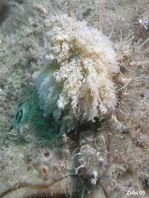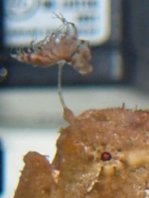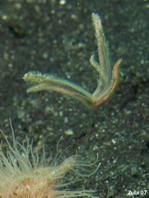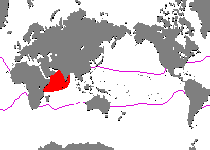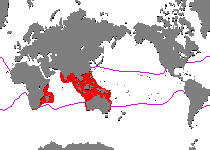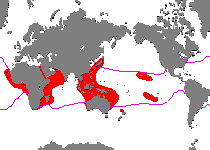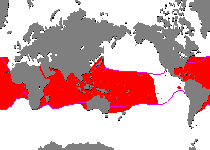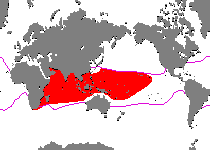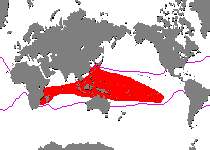
 www.frogfish.ch
www.frogfish.ch

|
Eastern
Atlantic If not from the areas above |
Identification Key Frogfishes
Indian Ocean (including the Red Sea) - Striped Frogfishes
![]()
All frogfish species listed here are living in the Indian Ocean (including
the Red Sea) and are striped.
For frogfishes with no stripes living in
the Indian Ocean (including the Red Sea) click here.
For a overwiew of all frogfishes from this area click here.
![]()
The Indian Ocean is the only place where there are so many species of striped frogfishes. Here the lures of the three main species:
| |
Details lure Antennarius indicus |
Details lure Antennarius striatus |
![]()
1. Stripes on the whole body
A typical frogfish of this geographic area is Antennarius indicus. It differs from other striped frogfishes that it also has 2 to 3 dark round spots with a white ring around each.
Antennarius indicus(Indian frogfish - Indischer Anglerfisch)
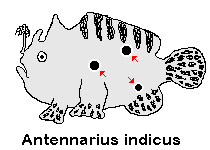 |
Information19cm |
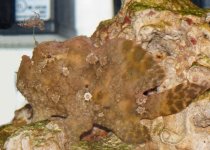 |
|
|
|||
Antennarius hispidus differs from Antennarius striatus in the shape of the Esca (large oval-shaped tuft versus worm-like appendages). Both species differ from Histrio histrio that this frogfish-species has very large pelvic fins which it needs to float in the Sargassum weed.
Antennarius hispidus (Hispid frogfish - Hispid Anglerfisch)
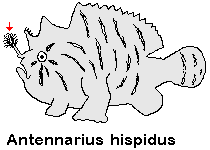 |
Information15-20cm |
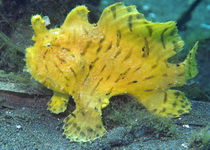 |
|
|
|||
Antennarius striatus (Striped or hairy frogfish)
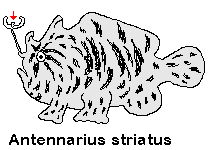 |
Information18-22cm |
 |
|
|
|||
Histrio histrio (Sargassumfish)
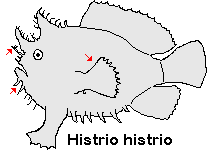 |
Information20cm |
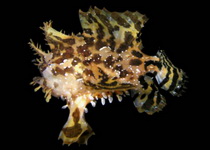 |
|
|
|||
A very uncommon species, has a very long whip-like lure - if you have a photo for me, please write to me!
Antennatus linearis (Pygmy frogfish)
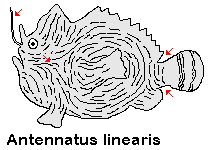 |
Information7.5cm |
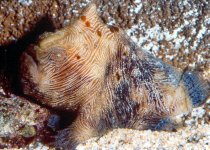 |
|
2. only striped tail
These two frogfish species only have stripes on the tail - please continue here.
Abantennarius coccineus (Freckled frogfish)
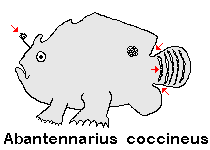 |
Information9-13cm |
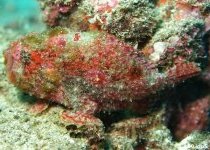 |
|
|
|||
Abantennarius dorehensis (New Guinea Frogfish) - Antennatus dorehensis
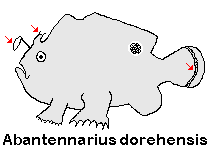 |
Information2.5-5cm |
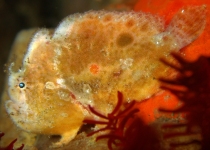 |
|
|
|||
![]()
This identification key is only for species of the subfamily Antennariinae (frogfishes, family Antennariidae, suborder Antennarioidei) which are frogfishes living in tropical and Subtropical waters.
Please take note, that this is a simplified identification key. Ichthyologists use tables with the number of dorsal, anal and pectoral rays, the length of the illicium and other distinguishing characteristics for means of identification.
